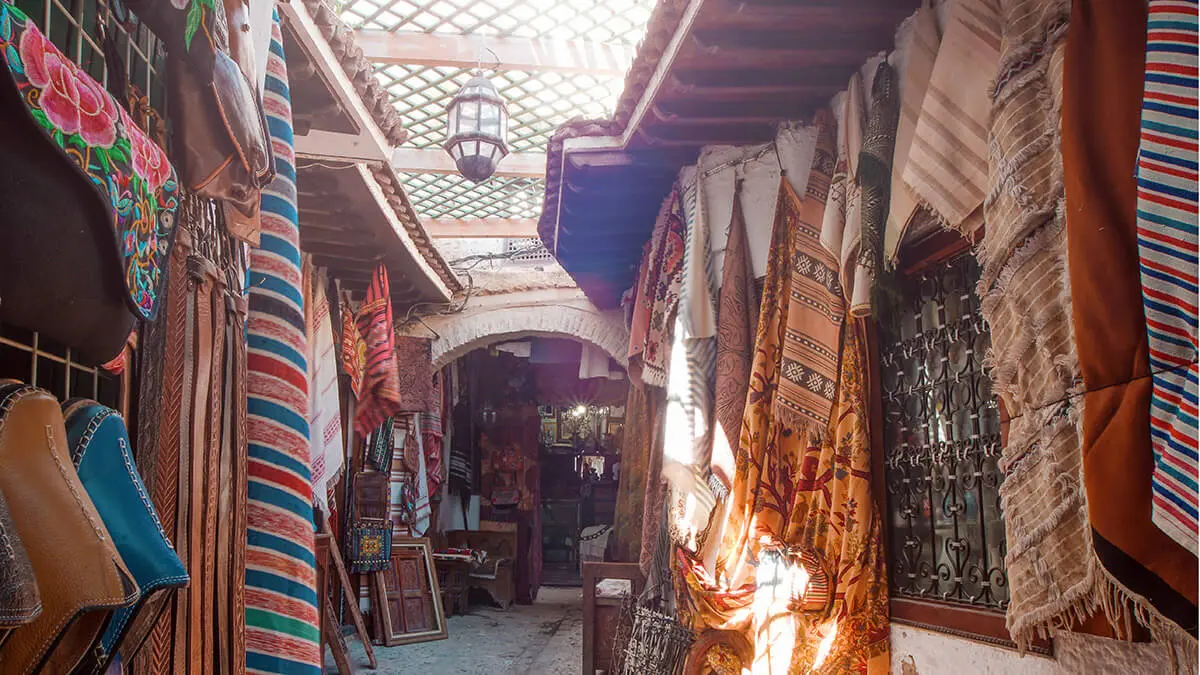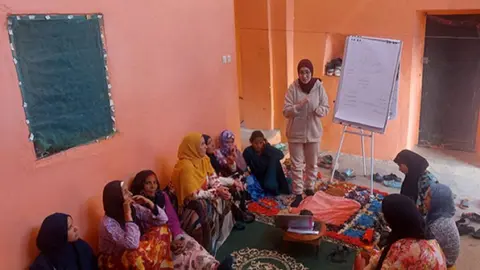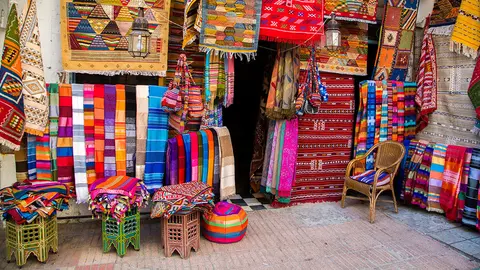Cutting Out the Middleman: Building Self-Reliance in Morocco’s Villages

They are beautiful. Unfortunately, no one will get to witness their beauty or the hard work that she put into creating the intricate rug that has Moroccan history and traditions woven between wool and thread. Though this is not for lack of effort on her part, it’s due to the lack of access to markets.
Markets are too far away, the middleman takes too much money— not even covering the cost of the materials necessary for the skillfully woven pieces—and the world beyond her village has no knowledge of her existence or the work that she does. Sadly, this is not simply a fictional story, it’s the reality of many Moroccan farming families and artisans whose hours spent toiling end up in a storage room instead of in homes, and whose harvests enrich big corporations instead of the communities. But what if the fruits of their labor were retained by those communities? What if the solution was not only providing funding, but to specifically invest in empowerment with intent to help alleviate the state of poverty for the long term?
Value-added is defined as “the amount by which the value of an article is increased at each stage of its production, exclusive of initial costs”, which explains why Moroccan farming families often sell their crops or products without benefiting fully from their labor. Implementing programs that help these cooperatives and farmers learn how to process, package, and market their products to people not only in their villages but also in urban areas and to visitors can help with enriching the communities. Attracting these new customers will help revive the economy and increase the money in circulation which can improve the quality of life. These effects are to be directed towards three groups, produce farmers, women’s cooperatives, and specialty crop farmers.
First, farmers make up 43% of employment, and 78% of those farmers are in rural areas. A percentage of those farmers plant produce that is harvested and sold at a low price to other people in the villages. But to ensure that the crops do not go bad, a large portion of the harvest is sold off to corporations that store these crops and sell them at a later time for a high markup. Providing farmers with mills, dryers, cold storage, and transport can help them process or store their harvests and retain the utility that is handed off to intermediaries. In fact, 85% of profits made go to these intermediates, and providing farmers with the knowledge and equipment can help them shift all the profits that are derived from their hard work in the fields.
Secondly, for the women in cooperatives, marketing training needs to be implemented for them to achieve financial gain. Data collected by the High Atlas Foundation (HAF) shows that a majority of cooperatives request or need training in marketing to help attract customers. HAF as well as other organizations have done admirable work in helping assist those cooperatives in learning how to properly market themselves, but significantly more cooperatives need this training. For example, a cooperative could end up selling some of its inventory, but it doesn’t reach the goal required for the women to sustain themselves without having to secure second jobs.
Lastly, for farmers, value-added agriculture—turning raw olives into oil, or argan kernels into cosmetic products—can help enrich a majority of olive and argan farmers. This problem affects farmers and their cooperatives who sell those crops in their raw form. Turning these crops from their raw form into a usable marketable product takes machinery, training, and markets, which for most farming communities are at inadequate levels of access.
In conclusion, the woman sitting by her unsold rugs isn’t just a symbol, it’s a call to action. Her story and those of majority Moroccan farmers and artisans alike show that talent and hard work aren’t enough when systems are built to favor intermediaries and corporations. To help tap into the potential that benefits intermediaries and redirect it towards Moroccan rural producers, we need to provide them with the necessities to retain value from processing, marketing, and selling. That way, we can help structure a future when rural small-landholders no longer work just to survive, but to thrive.
Ethaar Gwary is a student at the University of Virginia and an Intern at the High Atlas Foundation in Marrakech, Morocco.


